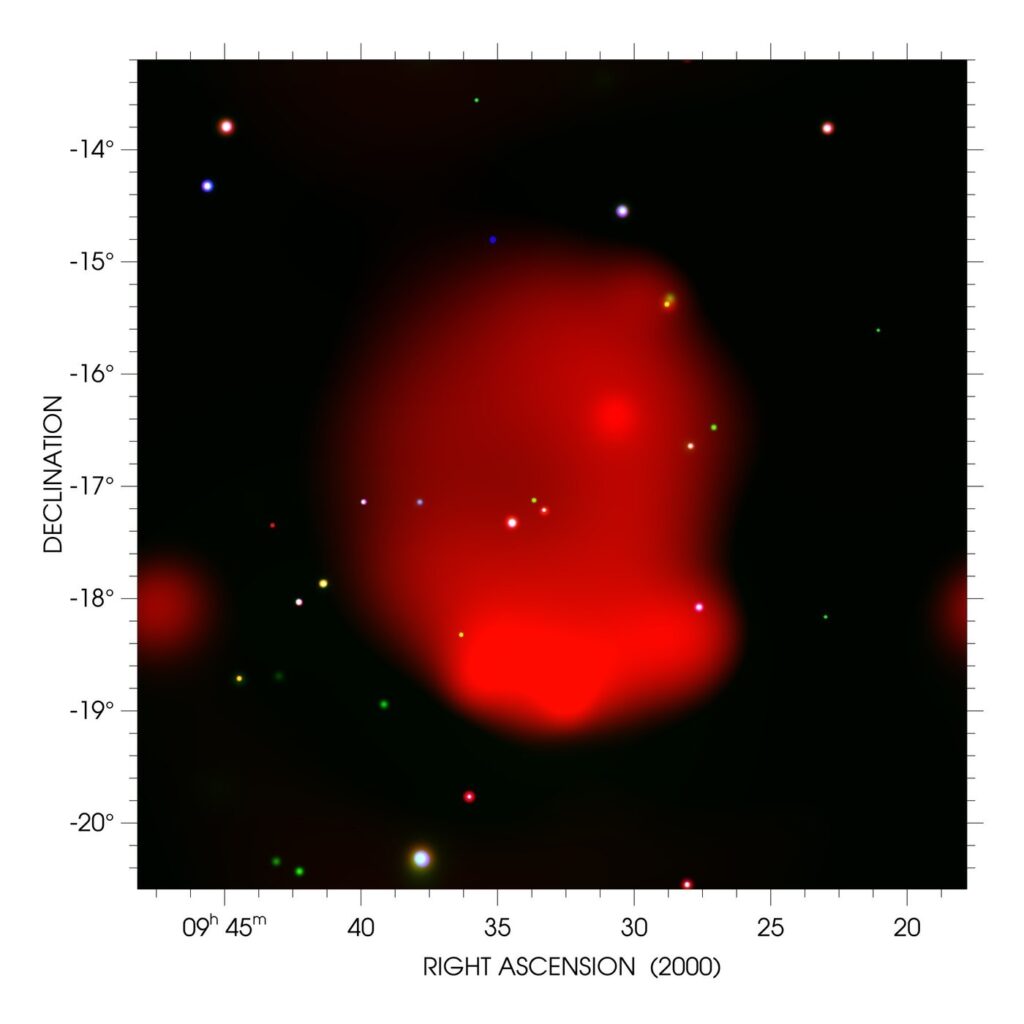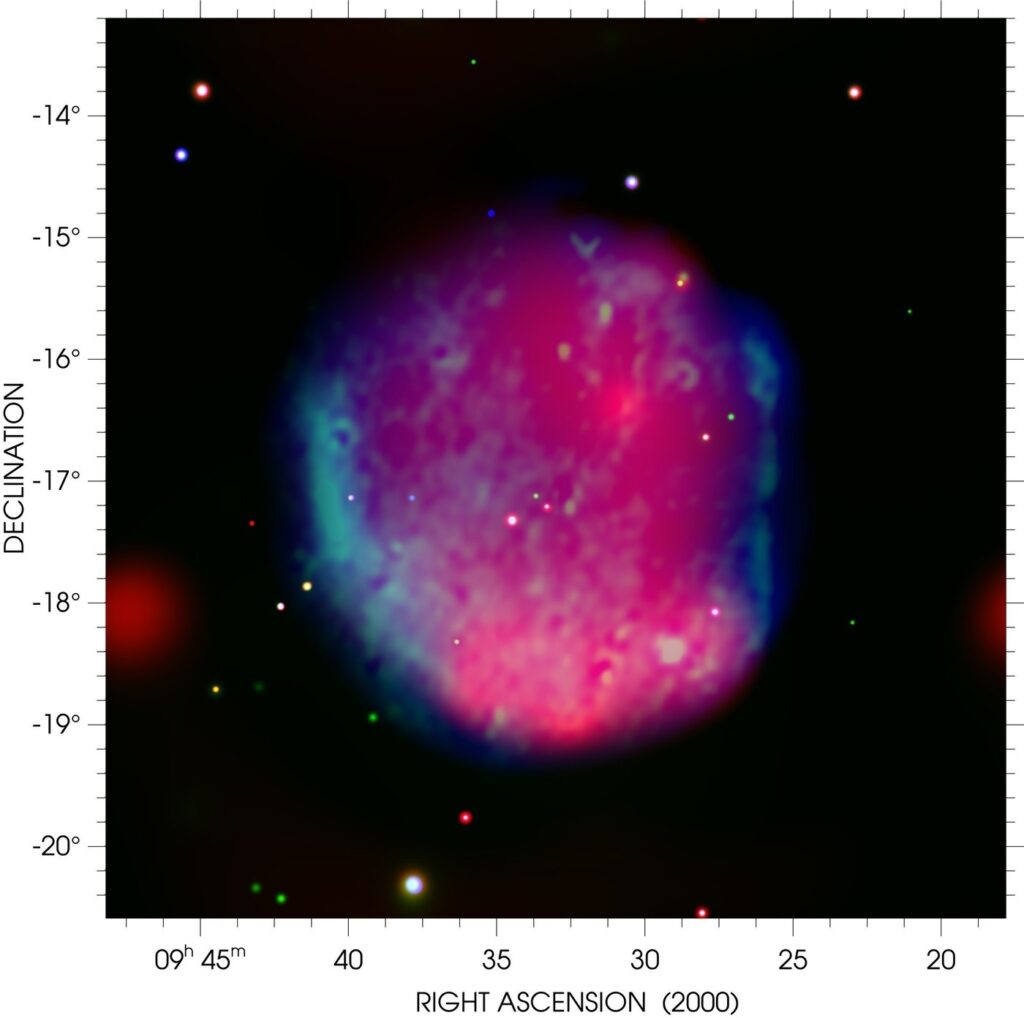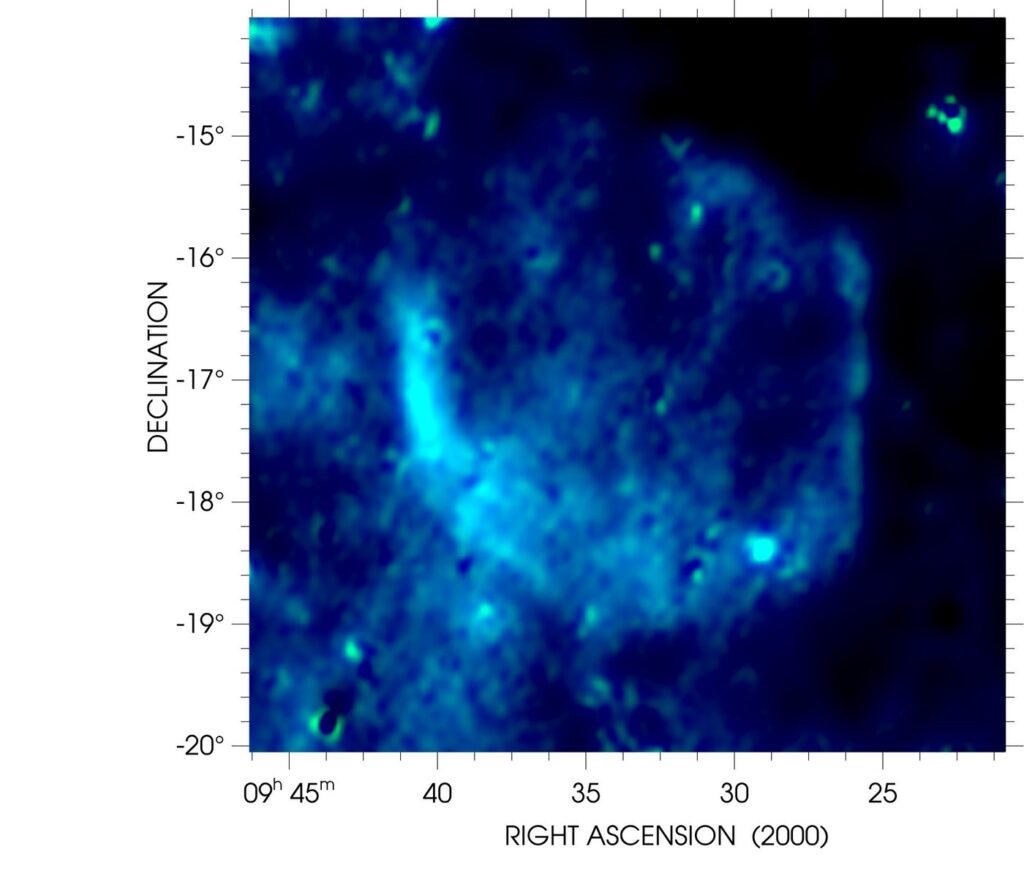In the first all-sky survey by the eROSITA X-ray telescope onboard SRG, astronomers at the Max Planck Institute for Extraterrestrial Physics have detected the largest in terms of apparent size supernova remnant ever observed in X-rays.

The supernova remnant (SNR) of Hoinga ,as it is called, is massive and far from the galactic plane, which is quite rare. It occupies an area approximately 90 times larger than the full Moon, with a diameter of about 4.4 degrees. Astronomers expect about 1,200 SNRs to be in our Galaxy, however only about 300 have been found so far.
.
.

X-rays – eROSITA 
Radio + X-rays 
Radio – CHIPASS and SPASS
SNRs are diffuse, spreading systems that arise from a supernova explosion. They include ejected debris from the blast and other interstellar material sucked up by the shock wave from the exploding star. Astronomers are interested in supernova remnants because they play an important role in the evolution of galaxies, dispersing the heavy elements produced by supernova explosions and supplying the energy required to warm up the interstellar medium (ISM). Experts also believed that SNRs caused the acceleration of interstellar cosmic rays.
The finding was confirmed in archival radio data and marks the first discovery of a joint Australian-eROSITA partnership established to explore our Galaxy using multiple wavelengths, from low-frequency radio waves to energetic X-rays.
“Our aim is to combine expertise across multiple wavelengths, from radio to X-ray, to search for hundreds of supernova remnants (SNRs),” said co-author Dr. Natasha Hurley-Walker, an astronomer at the Curtin University node of the International Centre for Radio Astronomy Research (ICRAR). The eROSITA telescope is 25 times more sensitive than its predecessor ROSAT so we expected to discover new SNRs in coming years, but were pleasantly surprised to have one appear straight away.”
The results were published in the journal Astronomy & Astrophysics with the title “Hoinga: A supernova remnant discovered in the SRG/eROSITA All-Sky Survey eRASS1” and first author W. Becker, doi: 10.1051/0004-6361/202040156. Source: mpe.mpg.de
